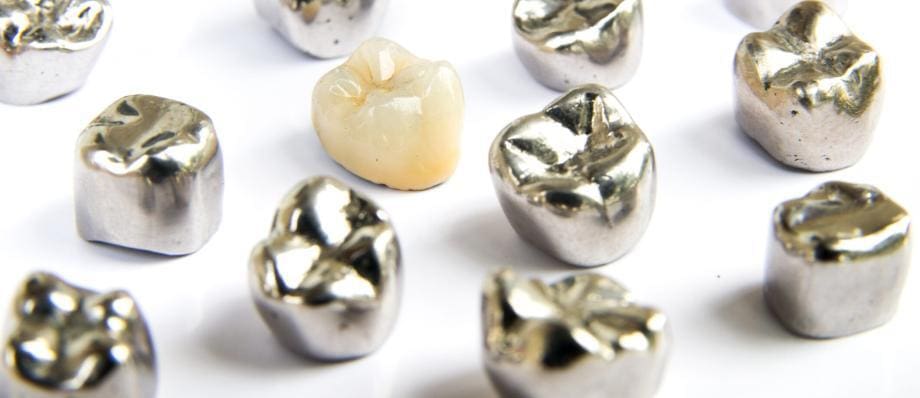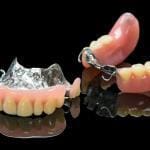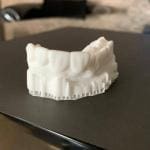Dentistry has come a long way in terms of materials and techniques used to restore and replace damaged or missing teeth. Among the key innovations in dental materials are dental alloys. Dental alloys are metal mixtures specially designed for use in various dental applications, including crowns, bridges, implants, and removable prostheses. These alloys are chosen for their unique properties that make them suitable for withstanding the harsh oral environment while providing structural integrity and aesthetic appeal. In this comprehensive article, we will delve into the world of dental alloys, discussing their composition, types, and applications.
Composition of Dental Alloys
Dental alloys are typically composed of a combination of metals and, in some cases, non-metallic elements. The specific composition of a dental alloy is carefully chosen to optimize its properties for dental applications. The primary metals used in dental alloys include:
- Gold (Au)
- Silver (Ag)
- Copper (Cu)
- Palladium (Pd)
- Nickel (Ni)
- Titanium (Ti)
- Non-Metallic Elements
Gold (Au)
Gold alloys have been used in dentistry for centuries due to their exceptional biocompatibility and corrosion resistance. Gold alloys often contain small amounts of other metals, such as silver, copper, and palladium, to enhance their mechanical properties. Gold alloys are used in various dental restorations, such as crowns and bridges, and are known for their durability and longevity.
Silver (Ag)
Silver is another metal that can be found in some dental alloys. Silver-containing alloys are known for their antimicrobial properties, which can be beneficial in certain dental applications. However, they are less commonly used today due to concerns about the discoloration of dental tissues over time.
Copper (Cu)
Copper is often added to dental alloys to improve their hardness and strength. Copper-containing alloys are commonly used in dental casting alloys to create strong and durable restorations.
Palladium (Pd)
Palladium is frequently used in combination with other metals, such as gold or silver, to form high-strength, corrosion-resistant alloys. Palladium alloys are especially popular for their use in dental crowns and bridges.
Nickel (Ni)
Some dental alloys contain nickel, but their use has become controversial due to concerns about nickel allergies in certain individuals. Nickel-free alternatives are often preferred to minimize the risk of allergic reactions.
Titanium (Ti)
Titanium and its alloys, such as titanium-aluminum-vanadium (Ti-Al-V), are commonly used in dental implantology. These alloys are known for their excellent biocompatibility and ability to osseointegrate with bone.
Non-Metallic Elements
In addition to metals, dental alloys may also contain non-metallic elements like carbon and nitrogen. These elements can enhance the mechanical properties of the alloy and improve its resistance to corrosion.
Types of Dental Alloys
Dental alloys can be categorized into various types based on their composition, properties, and intended applications. Some of the most common types of dental alloys include:
- Noble Alloys
- Base Alloys
- Titanium Alloys
- Amalgam Alloys
- Cobalt-Chromium Alloys
- Nickel-Chromium Alloys
Noble Alloys
Noble alloys, often containing a high percentage of gold and palladium, are highly resistant to corrosion and biocompatible. They are used in the fabrication of crowns, bridges, and inlays/onlays.
Base Alloys
Base alloys are primarily composed of non-noble metals, such as nickel and chromium. These alloys are known for their strength and are commonly used in removable partial dentures and orthodontic appliances.
Titanium Alloys
Titanium and titanium alloys are preferred materials for dental implants due to their biocompatibility, low density, and excellent mechanical properties. They promote osseointegration, making them a popular choice for implant-supported restorations.
Amalgam Alloys
Dental amalgam alloys are composed of silver, tin, copper, and mercury. They have been used for over a century in restorative dentistry. While their use has declined due to concerns about mercury toxicity and aesthetic reasons, they are still utilized in specific clinical situations.
Cobalt-Chromium Alloys
Cobalt-chromium alloys are known for their high strength and corrosion resistance. They are commonly used in removable partial dentures, implant frameworks, and orthodontic appliances.
Nickel-Chromium Alloys
These alloys, though strong and corrosion-resistant, have faced limitations due to the potential for nickel allergies. Nickel-free alternatives are often preferred when biocompatibility is a concern.
Applications of Dental Alloys
Dental alloys find applications in various dental procedures and restorative treatments. Some of the key applications of dental alloys include:
- Crowns and Bridges
- Dental Implants
- Removable Partial Dentures
- Orthodontic Appliances
- Inlays and Onlays
- Endodontic Posts
- Amalgam Restorations
- Implant-Supported Restorations
Crowns and Bridges
Dental alloys, especially noble alloys, are widely used in the fabrication of crowns and bridges. These restorations are designed to replace damaged or missing teeth, restoring both function and aesthetics.
Dental Implants
Titanium and titanium alloys are the materials of choice for dental implantology. They are used to create the implant fixture, abutment, and other components of the implant system. These alloys offer excellent biocompatibility and promote osseointegration.
Removable Partial Dentures
Base alloys, such as cobalt-chromium and nickel-chromium alloys, are commonly used in removable partial dentures. These alloys provide the necessary strength and durability required for the prosthesis.
Orthodontic Appliances
Dental alloys are used to create various orthodontic appliances, such as brackets, wires, and bands. These alloys need to have the right balance of strength, flexibility, and biocompatibility to facilitate orthodontic treatments.
Inlays and Onlays
Noble alloys are used in the fabrication of inlays and onlays, which are restorations that fit within or cover the cusps of a tooth. These restorations are conservative alternatives to full crowns.
Endodontic Posts
Dental alloys are used to create endodontic posts that provide support and retention for restorations on endodontically treated teeth. These posts are typically made from materials like stainless steel or titanium.
Amalgam Restorations
Dental amalgam alloys are still used in restorative dentistry to fill cavities in teeth. While their use has decreased, they are valued for their durability and longevity.
Implant-Supported Restorations
Dental alloys are used in the construction of implant-supported restorations, such as implant crowns, bridges, and overdentures. These restorations are attached to dental implants to replace missing teeth.
Properties and Considerations
When selecting a dental alloy for a specific application, several properties and considerations come into play:
- Biocompatibility
- Corrosion Resistance
- Mechanical Properties
- Aesthetics
- Cost
- Allergenicity
- Ease of Fabrication
- Longevity
- Thermal Conductivity
- Compatibility with Other Materials
- Regulatory Compliance
- Patient’s Medical History
Biocompatibility
The alloy must be biocompatible to minimize the risk of adverse reactions or rejections when placed in the oral cavity.
Corrosion Resistance
Dental alloys should resist corrosion in the wet and acidic environment of the mouth to ensure the longevity of restorations.
Mechanical Properties
The alloy should possess adequate strength, hardness, and flexibility, depending on the intended application.
Aesthetics
For visible restorations, the alloy’s color and appearance should match natural teeth or the patient’s expectations.
Cost
The cost of the alloy is a significant consideration, especially for patients and dental practices.
Allergenicity
Some individuals may be allergic to certain metals, such as nickel. Dentists must consider the potential for allergies when choosing alloys.
Ease of Fabrication
The ease with which the alloy can be cast, milled, or manipulated is an important practical consideration for dental laboratories and clinicians.
Longevity
Dental restorations are expected to have a long lifespan. The chosen alloy should be durable enough to withstand the stresses of daily use and biting forces.
Thermal Conductivity
Dental alloys should have thermal conductivity similar to natural teeth to prevent discomfort or thermal sensitivity in the patient.
Compatibility with Other Materials
In multi-material restorations, the chosen alloy should be compatible with other dental materials like ceramics and composites.
Regulatory Compliance
Dental alloys must meet regulatory standards and guidelines to ensure patient safety and product quality.
Patient’s Medical History
Dentists should consider a patient’s medical history, including any known allergies or sensitivities, when selecting an alloy for a restoration.
Commonly Used Dental Alloys
- High Noble Alloys
- Noble Alloys
- Base Alloys
- Titanium Alloys
- Cobalt-Chromium Alloys
- Nickel-Chromium Alloys
- Dental Amalgam Alloys
High Noble Alloys
These alloys contain a high percentage of noble metals like gold and palladium. They are known for their biocompatibility and resistance to corrosion. High noble alloys are often used for crowns, bridges, and inlays/onlays in visible areas of the mouth.
Noble Alloys
Noble alloys have a lower noble metal content than high noble alloys but still offer good biocompatibility and corrosion resistance. They are suitable for various dental restorations, including crowns, bridges, and inlays/onlays.
Base Alloys
Base alloys, which are primarily composed of non-noble metals, are valued for their strength and durability. They are commonly used for removable partial dentures, orthodontic appliances, and dental casting alloys.
Titanium Alloys
Titanium and its alloys are ideal for dental implants due to their remarkable biocompatibility and osseointegration properties. They are also used for implant abutments, healing abutments, and implant-supported restorations.
Cobalt-Chromium Alloys
Cobalt-chromium alloys offer excellent strength and corrosion resistance, making them suitable for removable partial dentures, implant frameworks, and orthodontic appliances.
Nickel-Chromium Alloys
These alloys are used in dental restorations but should be avoided in individuals with known nickel allergies. Nickel-free alternatives are available for those with sensitivities.
Dental Amalgam Alloys
Dental amalgam alloys contain silver, tin, copper, and mercury. While their use has declined due to aesthetic concerns and the potential for mercury toxicity, they are still used in specific clinical situations, such as in some posterior restorations.
Future Trends and Innovations in Dental Alloys
The field of dentistry is continually evolving, and dental alloys are no exception. Researchers and manufacturers are constantly striving to develop alloys that offer improved properties, aesthetics, and biocompatibility. Here are some emerging trends and innovations in the world of dental alloys:
Digital Dentistry
The advent of digital technologies has revolutionized dentistry, including the fabrication of dental restorations. Computer-aided design and computer-aided manufacturing (CAD/CAM) systems allow for precise milling of dental crowns and bridges from blocks of high-strength dental alloys. This technology reduces the margin for error and results in restorations with exceptional fit and aesthetics.
Biocompatible Alloys
As patient awareness of biocompatibility grows, there is a heightened focus on developing alloys that are even more biocompatible. This includes alloys that minimize the risk of allergic reactions or sensitivities, making them suitable for a broader range of patients.
Aesthetic Alloys
Aesthetic considerations are increasingly important in modern dentistry. Dental alloys are being engineered to closely mimic the color and translucency of natural teeth, ensuring that even restorations in highly visible areas are virtually indistinguishable from natural dentition.
Nanotechnology
Researchers are exploring the use of nanotechnology to enhance the properties of dental alloys. Nanostructured alloys may exhibit improved strength, corrosion resistance, and biocompatibility, leading to longer-lasting and more reliable restorations.
Smart Materials
The integration of smart materials into dental alloys is a burgeoning area of research. Smart materials can respond to environmental changes, such as pH levels or temperature, which may be beneficial in certain dental applications, such as drug delivery or remineralization.
3D Printing
Additive manufacturing, or 3D printing, is gaining traction in the dental industry. Dental alloys can be 3D printed to create custom implant components and other restorations. This technology offers greater flexibility and precision in fabrication.
Reduced Environmental Impact
There is a growing awareness of the environmental impact of dental materials. Researchers are exploring sustainable and eco-friendly alternatives to traditional dental alloys, considering factors like resource availability, energy consumption, and waste generation.
Improved Casting Techniques
Traditional casting techniques are being refined to reduce porosity and enhance the structural integrity of dental alloys. This leads to restorations with fewer defects and longer lifespans.
Biologically Active Alloys
Some researchers are investigating the use of dental alloys that release specific ions (e.g., silver ions) to inhibit bacterial growth and promote oral health. These alloys may find applications in preventing or treating conditions like dental caries.
Customized Alloys
Tailored alloys for specific patients or applications are becoming more feasible. Advances in material science and fabrication techniques allow for the creation of patient-specific alloys that optimize biocompatibility, strength, and aesthetics.
Conclusion
Dental alloys play a pivotal role in modern dentistry, offering a wide range of options for restoring and replacing teeth. The choice of alloy depends on various factors, including the specific dental application, patient needs, and aesthetic considerations. Advances in materials science continue to provide dentists and dental technicians with new and improved alloys that enhance the quality, durability, and aesthetics of dental restorations.
As dental technology evolves, it is essential for dental professionals to stay up-to-date with the latest materials and techniques to provide the best possible care to their patients. Dental alloys, with their diverse compositions and properties, remain a cornerstone in the field of restorative dentistry, contributing to improved oral health and enhanced smiles for countless individuals around the world.





